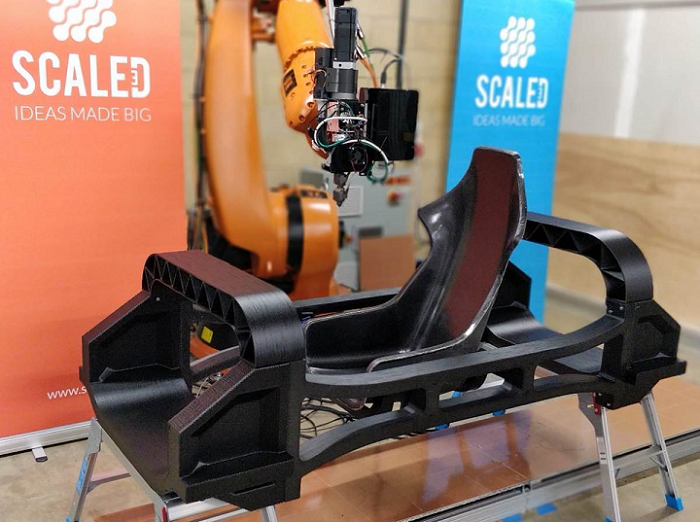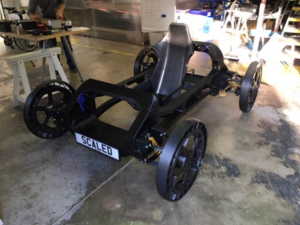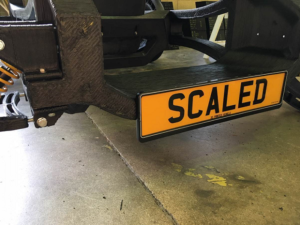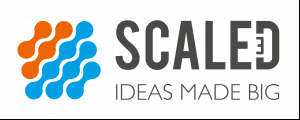 Founded in 2015, Swindon-based engineering company Scaled is on a mission to, as its website states, “bring large scale 3D printing technology to production environments across the UK.” The company wants to use digital speed to transform large-scale engineering, so that designers, engineers, and manufacturers can enjoy geometric freedom, while also lowering costs and increasing development time.
Founded in 2015, Swindon-based engineering company Scaled is on a mission to, as its website states, “bring large scale 3D printing technology to production environments across the UK.” The company wants to use digital speed to transform large-scale engineering, so that designers, engineers, and manufacturers can enjoy geometric freedom, while also lowering costs and increasing development time.
“Accelerated product development cycles leads to a faster time to market and significantly reduced costs,” the website reads. “Using our large scale 3D printing capability and expertise could transform your product creation process and ensure the cost-effective delivery of new and better product to your customers, faster than your competition.”
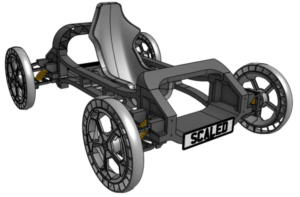 Technical Director Bob Bradley, who launched Honda’s initial R&D into 3D printing and ran three of GKN Aerospace’s R&D centers, co-founded the company together with David Speight, an expert in process, data and analytics with a Masters degree in Aeronautical Engineering. Currently, Scaled is focused on applications in the transportation field, such as infrastructure, tool making, and automotive – specifically a next-generation vehicle solution.
Technical Director Bob Bradley, who launched Honda’s initial R&D into 3D printing and ran three of GKN Aerospace’s R&D centers, co-founded the company together with David Speight, an expert in process, data and analytics with a Masters degree in Aeronautical Engineering. Currently, Scaled is focused on applications in the transportation field, such as infrastructure, tool making, and automotive – specifically a next-generation vehicle solution.
Bradley contacted 3DPrint.com to tell us about the company’s concept, which is a super-light, last-mile delivery vehicle with a 3D printed chassis.
“The concept is being developed by Scaled in order to showcase various aspects of our current 3D printing capability, including fast-make printed tools for CFRP manufacture of the light-weight seat and the direct printing of structurally-relevant components,” Bradley told 3DPrint.com.
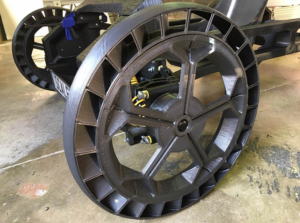 Just a few months after previewing its concept in a presentation at the Cenex LCV event, Scaled recently unveiled the vehicle at the Engineering Design Show in Coventry, which is the UK’s only event dedicated to electronics, embedded design, and engineering. Bradley explained to us that the vehicle is not supposed to be a replacement for the traditional automobile that many of us drive every day – instead, it’s a more sustainable alternative to performing tasks, from delivery and racing to security patrols, with “1.5 tonnes of folded metal and an internal combustion engine.”
Just a few months after previewing its concept in a presentation at the Cenex LCV event, Scaled recently unveiled the vehicle at the Engineering Design Show in Coventry, which is the UK’s only event dedicated to electronics, embedded design, and engineering. Bradley explained to us that the vehicle is not supposed to be a replacement for the traditional automobile that many of us drive every day – instead, it’s a more sustainable alternative to performing tasks, from delivery and racing to security patrols, with “1.5 tonnes of folded metal and an internal combustion engine.”
“My vision is that one day soon, a wide variety of electric hub motor propelled sub-automotive-category vehicle types (tuk-tuks, rickshaws, last mile delivery, security guard mobility, emergency service vehicles, AGVs) will all be produced on the same production line,” Bradley told us. “To give you an idea of a production scenario for low volume, two robot rigs such as the one above operating 10 kg/hr extruders could produce 40 vehicle of these types per week.”
The company mentioned a robot printing cell in a recent post on its LinkedIn page, stating that the robot “recently produced the UK’s first 3D printed lightweight vehicle chassis in 48 hours.”
“Using digital manufacturing to replace conventional tooled processes as the primary production route for vehicle structure is an exciting paradigm, as it solves the retarding effect that tooled processes have on the cost of model changes and variants – essentially freeing the designer from the cost constraints of upgrading product specifications. This is a direct benefit to the customer, who for the first time since Henry Ford began the cost-effective process of standardisation and mass-production of vehicles, will soon be able to take advantage of the flat economies of scope that come from flexible automated production and will one day soon be able to expect custom designs and unique products at no extra cost,” Bradley told us.
Scaled is helping its automotive design customers bypass normal issues, such as a long lead time on part prototypes and high costs, by using its 3D printing ability to quickly, and cost-effectively, create large-scale objects. The company is following in the footsteps of others, from Briggs and Ford to Toyota and BMW, but its vehicle concept is pretty unique. I’m interested to see what Scaled has planned next.
What do you think? Discuss this story and other 3D printing topics at 3DPrintBoard.com or share your thoughts in the Facebook comments below.
[Images provided by Bob Bradley, Scaled]Subscribe to Our Email Newsletter
Stay up-to-date on all the latest news from the 3D printing industry and receive information and offers from third party vendors.
You May Also Like
Precision at the Microscale: UK Researchers Advance Medical Devices with BMF’s 3D Printing Tech
University of Nottingham researchers are using Boston Micro Fabrication‘s (BMF) 3D printing technology to develop medical devices that improve compatibility with human tissue. Funded by a UK grant, this project...
3D Printing Webinar and Event Roundup: April 21, 2024
It’s another busy week of webinars and events, starting with Hannover Messe in Germany and continuing with Metalcasting Congress, Chinaplas, TechBlick’s Innovation Festival, and more. Stratasys continues its advanced training...
3D Printing Webinar and Event Roundup: March 17, 2024
It’s another busy week of webinars and events, including SALMED 2024 and AM Forum in Berlin. Stratasys continues its in-person training and is offering two webinars, ASTM is holding a...
3D Printed Micro Antenna is 15% Smaller and 6X Lighter
Horizon Microtechnologies has achieved success in creating a high-frequency D-Band horn antenna through micro 3D printing. However, this achievement did not rely solely on 3D printing; it involved a combination...


